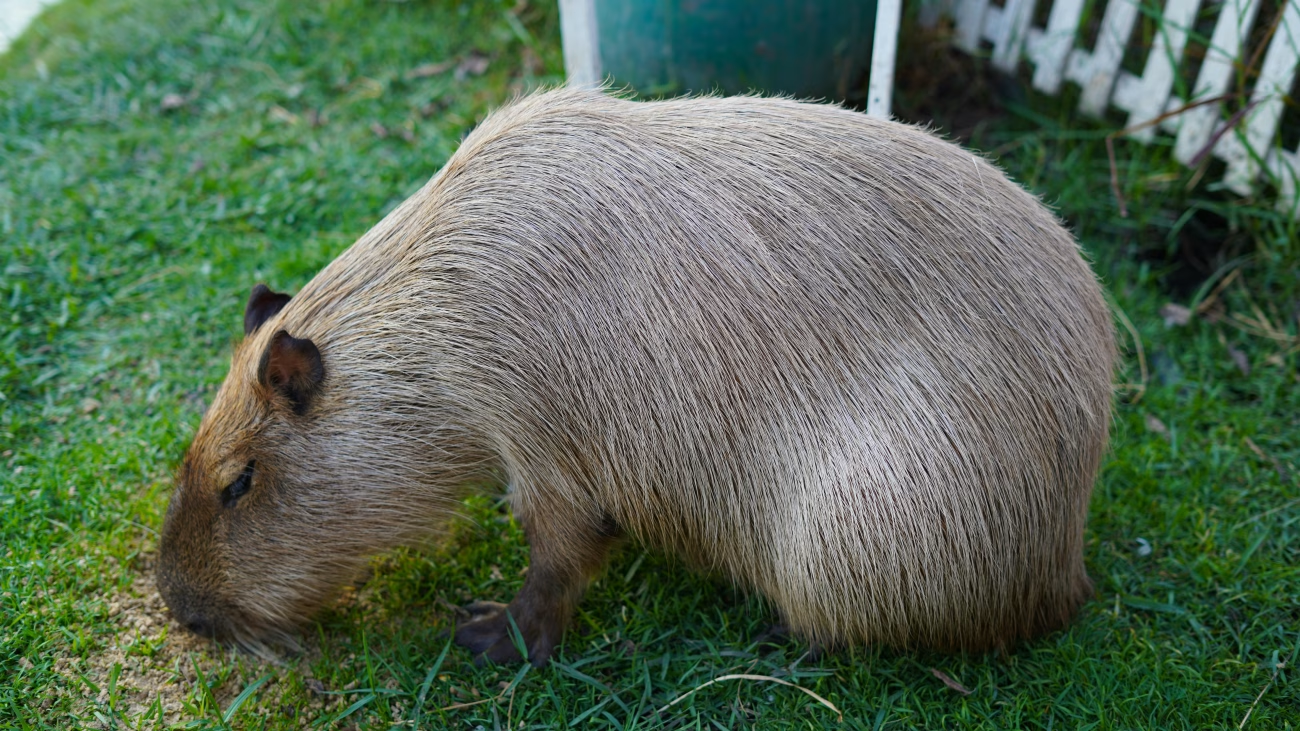There’s a reason the internet can’t stop talking about capybaras. You’ve probably seen the videos: a massive rodent sitting peacefully next to a cat, a dog, even a duck. It’s grooming the cat. The dog is licking its ears. They all look like lifelong friends.
And you think: how is this real? Aren’t wild animals supposed to be territorial, solitary, or…at the very least, aloof?
Capybaras break that mold entirely. They’re calm, social, gentle… and oddly dog-like. But this isn’t just internet myth or meme magic. There’s real biology and behavior behind why capybaras act the way they do, and understanding it reveals a fascinating bridge between the wild and the familiar.
A Pack Mentality, But Not the Kind You Think
While capybaras are technically wild animals, they live in large, organized groups in the wetlands and savannas of South America. Their social structure is surprisingly advanced: clear leadership roles, shared grooming rituals, coordinated movement, and vocal communication that rivals some domestic pets.
In short, they’re not loners. And that’s a big part of what makes them so approachable.
Like dogs, capybaras form tight social bonds. They’re emotionally intelligent, capable of reading cues from other animals, and rarely aggressive. That’s why they can live peacefully not just with their own kind, but also with animals from entirely different species, including humans.
Their ability to trust and coexist isn’t a fluke. It’s a survival strategy.
Calm, Confident, and Unbothered
What strikes most people about capybaras is how unshakably calm they seem. Loud noise? Splashing toddlers? Curious dogs sniffing their face? Capybaras barely flinch.
This isn’t laziness. it’s confidence. Their relaxed demeanor comes from their position in the wild. As large, semi-aquatic herbivores, they don’t rely on aggression or flight to survive. Instead, they rely on community, awareness, and adaptability.
That psychological security translates into social openness. Much like a confident, well-adjusted dog, a capybara doesn’t need to dominate or defend. it simply exists, and lets others do the same.
They Don’t Just Tolerate Touch, They Seek It
Pet owners know that dogs aren’t just okay with being touched.. they need it. They lean on us, press against our legs, ask for belly rubs. It’s how they bond.
Capybaras do something very similar. In the wild, they spend hours grooming each other. This contact maintains social bonds and reduces stress. In captivity, they do it to humans. Or to cats. Or birds. Or sometimes even to inanimate objects. It’s not that they forget they’re wild, it’s that their definition of “us” is broad. If you’re calm, gentle, and respectful, they just might count you as part of the herd.
The Sounds of Friendship
Capybaras don’t bark or whine, but they have their own rich language. They chirp, purr, whistle, and even make a low rumble when relaxed. Many of these sounds are social calls. Ways of saying “I’m here,” “You’re okay,” or “Let’s stay together.”
This kind of emotional communication feels incredibly familiar to dog owners. It’s not just the fact that they make sounds, but how and when they make them. Capybaras are attuned to tone, touch, and presence. They don’t wag tails, but their emotional fluency is just as expressive.
Are They Really Like Dogs? Or Just Dog-Compatible?
Let’s be clear: capybaras are not domesticated. They’re wild animals, even if they’re unusually friendly ones. But their behaviors overlap with dogs in meaningful ways:
- They thrive on companionship
- They respond to human cues and social energy
- They exhibit trust, patience, and cooperation
What makes this more than coincidence is how dogs react to them. Dogs seem to recognize something in capybaras that puts them at ease. Perhaps it’s body language, scent, or the capybara’s complete lack of tension.
Whatever it is, the result is magical. Dogs don’t treat capybaras like prey or even rivals. They treat them like peers.
Why It Matters
Understanding capybaras isn’t just about admiring their chill vibes. It challenges how we think about wildness, tameness, and emotional intelligence in animals. Not all wild animals are aggressive. Not all domestic animals are friendly. And some creatures, like the capybara, sit beautifully in between.
For pet lovers, the capybara reminds us that gentleness isn’t weakness, and that emotional connection is a trait that transcends species. It also hints at how complex the inner lives of wild animals can be. They’re not just surviving, they’re communicating, bonding, and sometimes even… making friends.
The Wild Can Be Gentle
If you’ve ever watched a capybara calmly lounging in a hot spring, surrounded by ducks and monkeys and photographers, you know the feeling it inspires. It’s not just wonder. it’s recognition.
They’re not dogs. But they show us that the line between wild and tame isn’t always sharp. Sometimes, it’s soft and furry and shaped like a capybara. And maybe that’s why we love them so much.



3 thoughts on “Capybaras: Why the Chillest Wild Animal Acts Like a Dog”